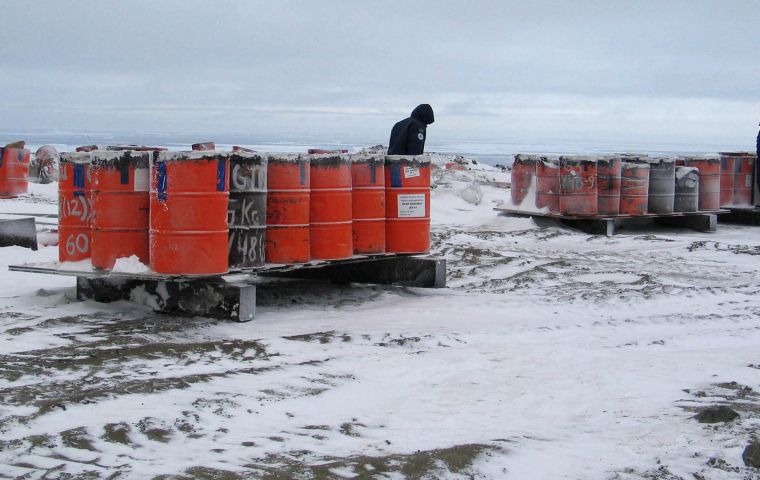MercoPress. South Atlantic News Agency
Human waste found on Antarctica's Byers Peninsula
 The findings proved that currents can move debris over thousands of miles
The findings proved that currents can move debris over thousands of miles Spanish scientists led by Professor Jesús Ruiz Fernández of the University of Oviedo have found traces of human waste, including plastic bottles, drums, flip-flops, and other objects, on Antarctica's Byers Peninsula, one of the continent's most protected areas. The discovery was made last week during their research on glacier retreat and ecosystem evolution.
The Byers Peninsula, home to unique biodiversity and limited to a maximum of 12 people at a time due to its high ecological value, now faces a serious threat from marine pollution. With a surface of 60 square kilometers, the peninsula is home to a unique biodiversity adapted to the extreme conditions and lack of direct human intervention. With human presence in the region deemed almost nonexistent, the researchers were surprised to see garbage reaching there. The waste is attributed to ocean currents carrying garbage from distant places and ships dumping waste at sea. This phenomenon demonstrates how currents can move debris over thousands of kilometers, it was explained.
This finding highlights the magnitude of global pollution, showing that even the most remote and previously untouched places are not safe from human activity. Plastic is particularly persistent, taking centuries to decompose and releasing toxic substances. It can split into microplastics, which, when ingested by marine organisms, disrupt food chains and affect local wildlife. Plastic bottles are one of the most common items found.
Professor Fernández's mission was to study the retreat of the glaciers and the evolution of the ecosystem in the last millennia. However, the unexpected appearance of these elements diverted their attention to global pollution, particularly the kind generated by human activity.




Top Comments
Disclaimer & comment rulesCommenting for this story is now closed.
If you have a Facebook account, become a fan and comment on our Facebook Page!